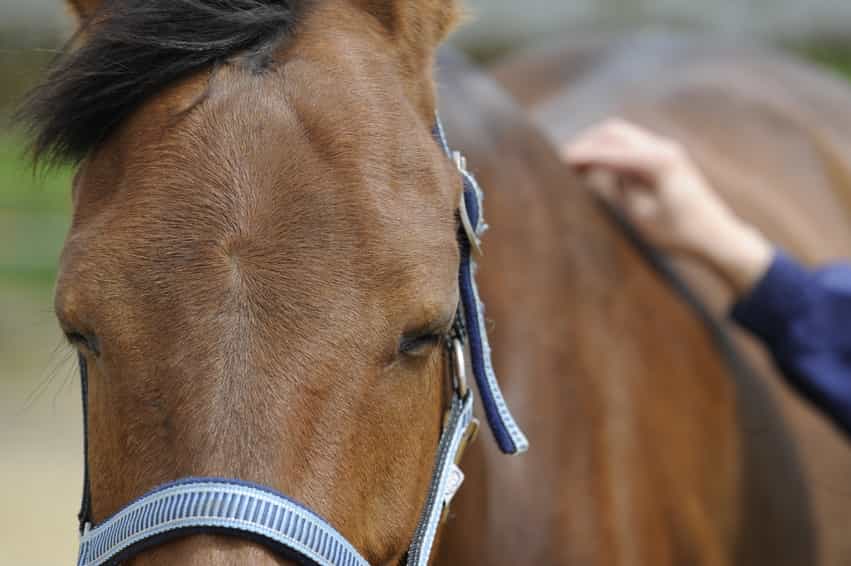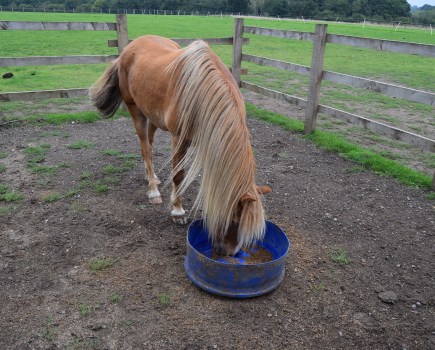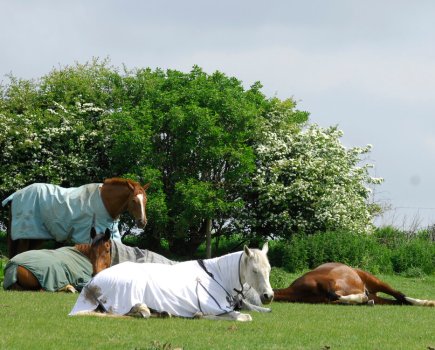Keeping your horse’s back healthy will enhance his performance and keep him pain-free, making him a happy horse to be around.
There are lots of little ways that to care for your horse’s back. Check out physiotherapist Sam Rodwell’s top tips.
1. Use a mounting block
If possible, always use a mounting block to mount and stand your horse as close as possible to it.
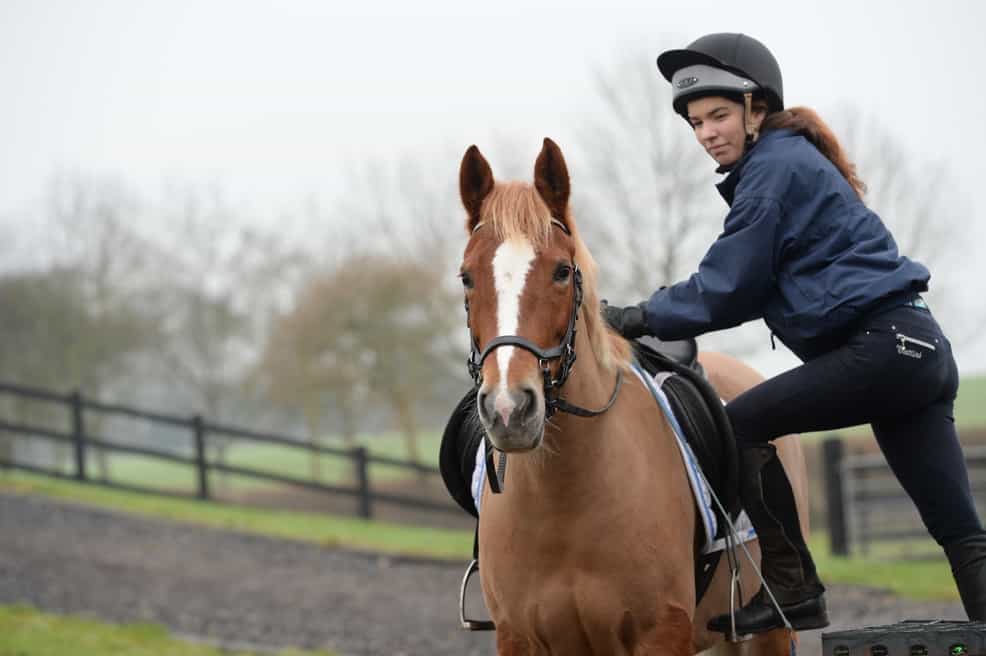 This minimises twisting the saddle tree and causing discomfort.
This minimises twisting the saddle tree and causing discomfort.
Try not to use your right hand to pull on the cantle when mounting as this will also cause the saddle to twist.
Instead, place your hand on the right side behind the pommel.
2. Is your saddle twisting?
When riding with a friend, ask them to ride behind you to check your saddle isn’t slipping or twisting as you walk or trot.
They can also check you’re sitting level and your stirrups are the same length.
3. Warm up your horse
When schooling, it takes 15 minutes of walking and mostly trotting for your horse’s muscles to warm up and start to work to the best of their ability.
Factor this time in before asking your horse to come into an outline and really start to work.
Also allow 10 minutes to cool down.
4. Let your horse stretch
Lunge your horse once a week allowing him to stretch. It’s good for him to use his back without your weight – and it’s also a good chance for you to watch him move and spot any changes.
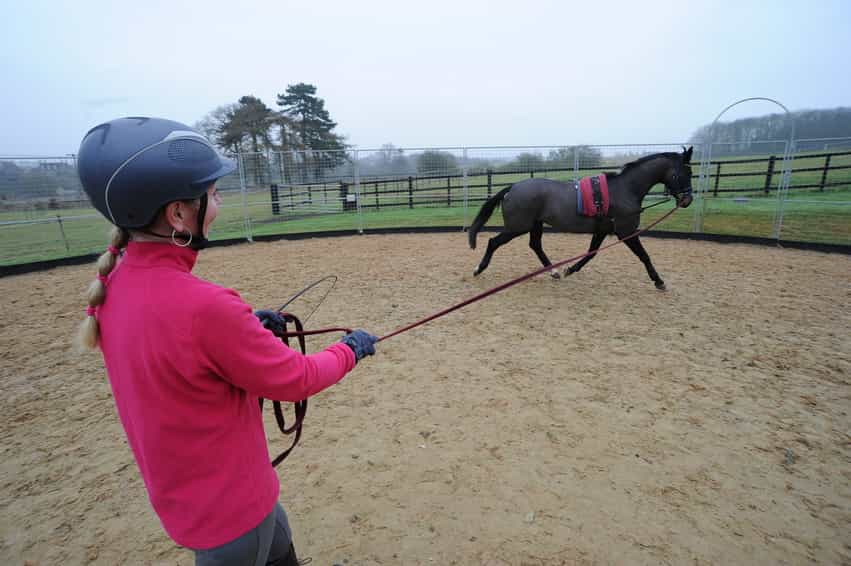 His back muscles should show a gentle ‘ripple’ if they’re healthy.
His back muscles should show a gentle ‘ripple’ if they’re healthy.
5. Work on your fitness
Look after yourself too – rider balance and fitness will directly affect how your horse moves through his back.
Keep yourself fit and supple, and keep your core strength up. Joining a pilates or yoga class will help.
6. Mind your back
Care for your own back when mucking out and doing yard duties, so you don’t become sore and tight.
7. Check your horse’s back
It’s a good idea to have a professional check your horse’s back regularly as prevention is better than cure.
The frequency needed depends on the individual horse and his level of work. Once a year is fine for some; other competition horses may need monthly check ups.
They’ll be able to advise on appropriate stable-based and in-hand exercises to help develop core muscle strength, back stability and flexibility.
8. Train your horse gradually
Don’t suddenly increase or change your horse’s workload; it had to be a gradual process to avoid muscle injury.
9. Work your horse evenly
Work your horse evenly on both reins – it’s too easy to do more on their easier, dominant rein and neglect the harder one.
10. Remember to change diagonal
When hacking, change diagonal regularly while trotting, every 20 rises.
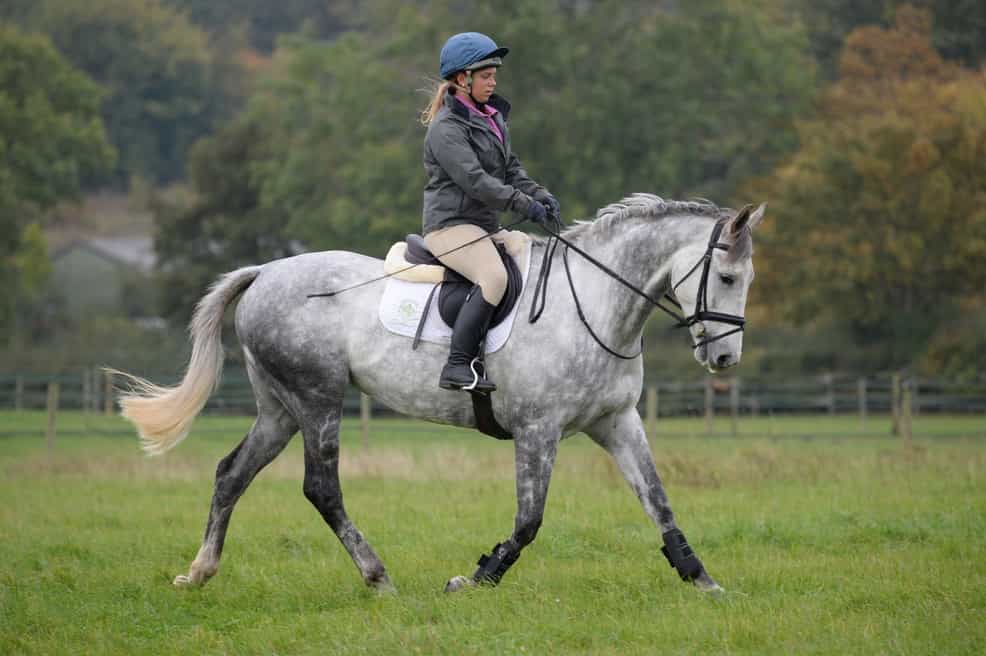 11. Be aware of your horse’s other conditions
11. Be aware of your horse’s other conditions
Other conditions may affect your horse’s back. Things like hock spavin, poor foot balance, dehydration, poor nutrition and joint arthritis will all change the way he moves and uses his muscles.
12. Try lateral work
Ridden lateral work in walk, trot and canter will help strengthen your horse’s core and back.
Some basic leg-yielding can make a huge difference and this can even be done when you’re out hacking.
13. Focus on riding your horse straight
When riding, focus on calmness, forwards movement and straightness as this helps develop a horse’s self-carriage and back strength.
Have this in mind when you’re both hacking and schooling.
14. Change his canter
When hacking, alternate canter leads each time you canter.
 15. Work your horse long and low
15. Work your horse long and low
Spend time in each session encouraging your horse to work in a correct or long and low outline to avoid extension of his back.

